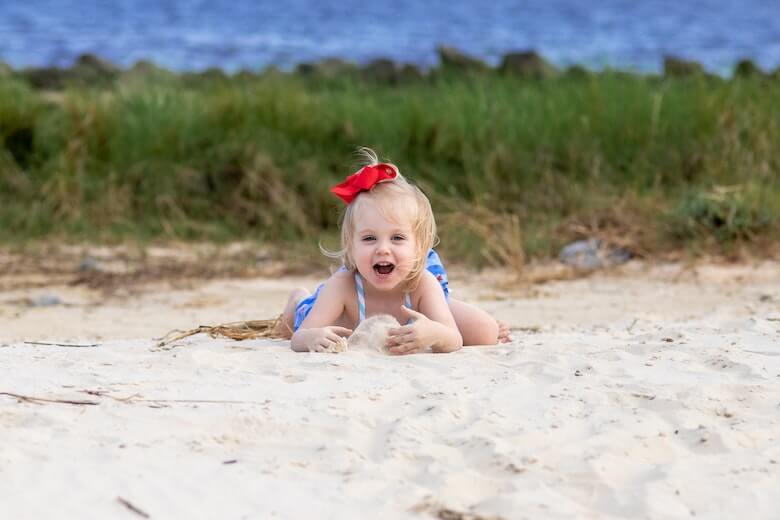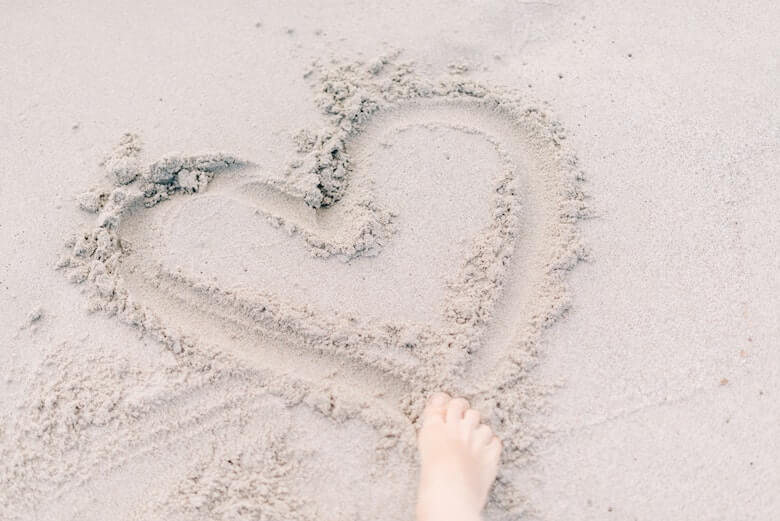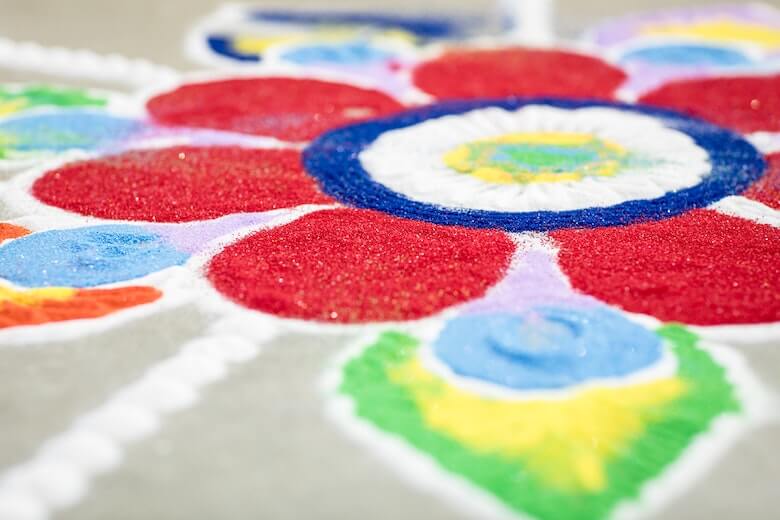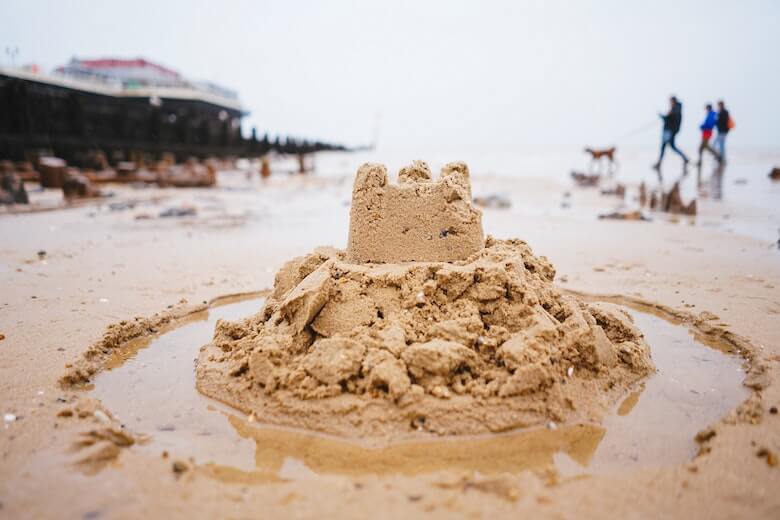
Playing with sand is really relaxing and calming. That’s why even adults get to play with zen gardens in their offices these days. But, apart from being fun, sand can be used for tactile sensory activities with preschoolers. It can also provide learning and development opportunities.
In this article, we’ll give you sand games and activities to play with preschoolers, from the classic to the novel.
1) Use a sand tray to draw and write

When children learn to write, it helps to first develop their fine motor skills. It also helps to encourage drawing and making lines. One way to do this is with a sand tray (if you are indoors).
Instead of using an actual tray, you can use a shallow bin, to help contain the sand better. Fill it with a shallow layer of play sand of any colour, and encourage children to draw letters, shapes, or simply make squiggles in the sand with their forefinger. This will help with hand-eye-coordination and muscle memory.
If you’re at the beach or in an outdoor sandpit, you can also practice drawing with a stick!
2) Make a ‘treasure hunt’ sand sensory bin
Like with the sand bin noted above, you can add a thicker layer of sand to the bin, and fill it with craft crystals and transparent stones or marbles, to be ‘gems’ and treasures. You can also use handmade clay gold nuggets (let them dry and paint them gold). Bury these items and ask toddlers to see if they can find them all. Then on the next round, they can be the ones to hide them, and you have to find all the pieces!
You can also do this at the beach, although you’ll really want to remember where you buried your stuff, or you might lose them forever! Use natural materials at the beach instead of plastics. This is not only more in-tune with nature, it also prevents added plastic from entering our oceans.
3) Make kinetic sand (a.k.a. moon sand) for more moulding power
You could buy kinetic sand (a.k.a. moon sand) at the store – there are plenty of options. But it’s actually really easy to make.
The recipe almost always includes sand, cornstarch, flour, water and oil, but different recipes can be found online that call for these in differing amounts. Sometimes they leave out the sand altogether.
Here is a basic recipe you can try. You can see that the writers went to lengths to test their recipe, too!
4) Make slime sand for sensory, gooey goodness
Slime sand is basically a slime recipe with sand added to it. It provides a different texture compared to sand alone, or to slime alone. Children will feel the graininess of the sand and the gooeyness of the slime for a 2-in-1 sensory play toy.
5) Make long-lasting sand castles and sand models
If your preschool classroom is learning about the ocean, this will be a perfect sand-themed activity to do with them.
This recipe is a tad different from moon sand or slime sand; it can dry out and last a long time, kind of like playdough.
We found it on this blog, which also shows an example of a sandcastle you can make.
6) Make a sand volcano
There are a few ways you could make a sand volcano as a preschool science experiment. According to this blogger, you can use a water bottle for the interior, which is what you’ll eventually fill with baking soda, food colouring and vinegar (plus a little whip cream if you want it to be extra foamy). The children will then need to make a mound with sand around the ‘volcano’ (i.e. the water bottle).
Another way to create a sand volcano is with playdough or clay. When you have your volcano shape, pile the outside with sand, pushing it in towards the clay so it ‘sticks.’ You may still want a cup of some sort in the centre, to hold the liquid. This volcano craft blog explains how to make something similar (its recipe uses dish soap, by the way)
To really make it ‘theirs,’ give children dinosaur toys to make a little diorama around the ‘volcano.’ They can also decorate it with stones and sticks.
Just a note: you may want the ‘explosion’ to happen outdoors, or within a bin that can hold the giant, runny, muddy mess you’ll be making!
7) Make coloured sand glass bottles
A classic sand activity is to make coloured sand bottles as a preschool craft idea. This involves layering coloured sand in a transparent bottle, so children can see the formations that the sand makes. This blogger explains how she did this with her group of children using outdoor sand and edicol vegetable dye.
8) Play sand games with hourglasses, or make your own

You know what else uses sand? Hour glasses! They can be mesmerizing to watch. Some are small-sized, to time activities in board games. You can make your own hourglass with bottles attached together, too.
When you have your hourglass, play games with children using them. For example, how many rocks can we collect before the sand runs out? Or, how many times can we run in a circle before the sand runs out? You can also use this to time clean up activities, so children don’t dilly dally!
One child can be the one to watch the sand each time, and turn it over when it’s time to restart the next challenge.
9) Make an ant farm as a preschool biology lesson
If bugs make you squirm, this may not be for you. But if you find ant colonies fascinating, then you’ll love watching them make their intricate tunnels through a glass jar.
You can use this as a preschool biology lesson, while also explaining the function of sand as a habitat for creatures.
Here is how to make a DIY ant farm. You may want to keep it outdoors juuuust in case the little critters escape! And, be sure you pick the harmless ants! No carpenter or biting ants inside any buildings, capisce?
10) Create paper canvas sand art

Some people encourage using sieve to filter sand, either for spreading aimlessly, or for art.
But, let’s back up a bit. When it comes to making art with sand, think of it like glitter. You’ll need glue of some sort, which will be used to create the shape or drawing where the sand will eventually stick onto the surface you’re using. Paper is an easy choice. You can also decorate popsicle sticks or clay molds this way.
Children can use the sieve to shake the sand onto the glue, or they can sprinkle it with their fingers. Either method is good for developing hand control and motor skills.
Some even suggest using squeeze bottles to distribute the sand. This would help to keep the sand colours separate. However, the hole would need to be big enough to let just enough sand out, without letting sand get clogged.
Whatever method you use, pick a theme, add some food colouring and encourage your preschoolers to get creative!
11) Make a beach sand castle with a moat

If you take your preschoolers to the beach on a field trip, you can have fun with the classic sand activity: make a sand castle! This activity gets extra interesting when you add a moat filled with water.
To make the sand castle, you’ll of course need run-of-the-mill sand toys, such as buckets, little shovels and sand moulds. These can be found at the dollar store. Though, higher-quality ones can be found in toy sections of department stores, on Amazon and similar sources.
To keep the sand from falling apart, it needs to be a little wet. Ask the children to work together to use their buckets and shovels to carry water from the shore, to a nice damp spot where they can build their castle. Ensure an adult who can swim is always present. It’s also not a bad idea to keep children in life jackets, just in case.
Teach children to pack the buckets with sand and water, flip them over and start stacking the sand molds until they form the shape of the castle they want. They can also grab handfuls of sand and water to make mounds without using buckets. Inevitably, some of these ‘walls’ will fail, but children will learn how wet sand texture ‘works.’ It’s a little science experiment, actually! It’s not about too much or too little water – just the right amount is perfect!
Lastly, children can use their raking grasp skills to dig a moat around the castle and all the way to the ocean. Fill the moat with water and watch as a river goes by! It’s a thrill! Add some little boats or sea shells and see if they float!
12) Bury the teacher with sand!
Whether it’s the teacher, the parent, the grandparent or some other grown up, children can have a blast trying to ‘bury’ them in sand. This will involve a willing ‘child at heart’ to be the ‘victim’ of the children as they pile sand all around their legs. The adult can pretend to be ‘trapped’ and the children will find that so laughable – trust us! Children will learn teamwork, idea sharing, cooperation and social skills as they do this.
Sand games and activities are more than grains – they’re bucketfuls of fun and learning!
As we’ve seen above, sand games and activities to play with preschoolers can be both fun and educational. You can incorporate the above ideas into lessons on nature, art, science and even getting along and feeling included. But in and of themselves, they’re just plain enjoyable!
See more on our blog: